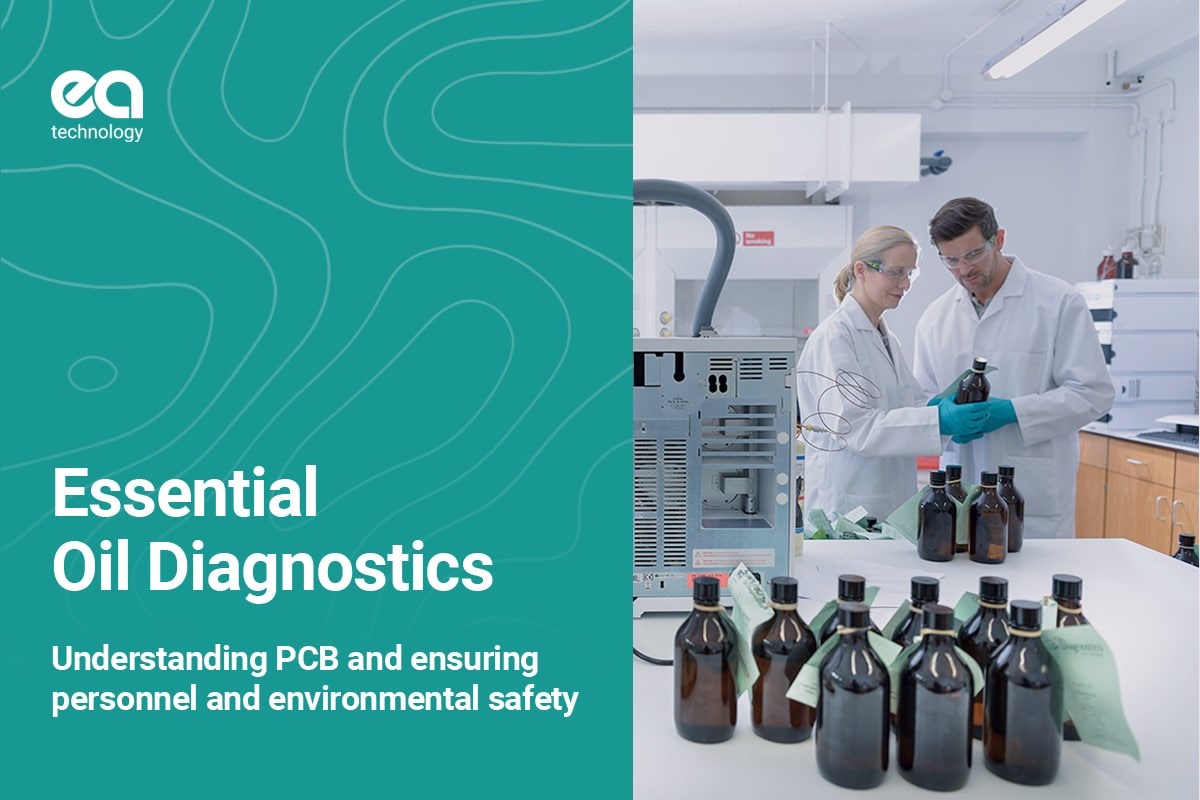Understanding PCB and Ensuring Personnel and Environmental Safety
-
24 March 2021
-
EA Technology

The eighth blog in the series is not one covering condition information or tests that offer a maintenance output and guidance but one that is purely a health and safety matter associated with Polychlorinated Biphenyls, otherwise known as PCB. Although the chances of coming across a high concentration of PCB on the UK electricity network is very low it still happens to this day so it's something you need to be aware of.
Background to PCB’s
PCBs are carcinogenic and their use is regulated by the Environmental Protection Agency (EPA) under Environmental Protection (Disposal of Polychlorinated Biphenyls and Other Dangerous Substances) (England and Wales) Regulations 2000.
PCB oils were initially proposed as dielectric fluids for use in electrical equipment because of their excellent dielectric properties and very low flammability. PCB oil can withstand high temperatures and has a low flash point and no fire point, meaning that they are stable in changing temperatures. They only burn if placed in contact with an open flame.
When PCBs do burn, very toxic chemicals are formed. These toxins are hazardous, some of which are dibenzofurans which can have significant effects on people’s health. PCB’s are very stable and are easily absorbed by the fatty tissues of humans and animals and repeat exposure can cause PCB concentrations to build up in the body and these molecules are very difficult to eliminate.
What assets may contain PCB’s
Essentially any asset with oil in can contain some PCBs, however PCB fluids were phased out from the early 1980s, depending on the country. It should be assumed that equipment manufactured before 1987 may contain PCBs. Any equipment after this time are unlikely to contain PCB’s but you can only be 100% sure if they have been tested to confirm.
PCB limits
Although it is very unlikely that you will come across pure PCB oil (on the UK network, more common overseas) it is more common to come across PCB contaminated mineral oil. During the use of PCB oil there were often sites with both mineral and PCB filled assets much like we see today with mineral and Midel fluids. During maintenance the same oil drums were used for emptying and refilling the assets. For those assets containing mineral oil the maintenance effectively dosed the oil with PCB fluid giving rise to PCB contaminated mineral oil and this is where the issue lies.
So we have three types of classification (taking transformers as an example):
- Non-PCB Transformer– any transformer that contains oil / fluid of less than 50ppm PCB. These are fine and no action needs to be taken and normal operation can continue.
- PCB Contaminated Electrical Equipment– transformers that contain concentrations between 50ppm – 500ppm. The oil should be removed from the network when is next practically possible and the unit flushed and refilled to ensure the PCB concentration is below 50ppm.
- PCB Transformer – transformers containing more than 500ppm PCB. The oil must be removed from the network immediately and the unit flushed and refilled to ensure the PCB concentration is below 50ppm, this may take several flush operations.
What to do if you have a PCB content >50ppm
There are a number of things you should do to ensure the safety of personnel and also the environment if you have a PCB asset which has a PCB content >50ppm. Firstly the asset register should be updated, the asset should be labelled with the PCB concentration and the asset information recorded with the EPA. This is a regulatory action and your PCB register must be submitted to the EPA every year by 31st July (so get the date in the diary).
Next consider if you can remove the oil, it’s the safest option all round not to mention the positive effect on your environmental footprint. You may be able to retain the oil in the asset until the end of its life but that is an environmental and health issue waiting to happen. If the PCB content is >500ppm then you have no option but to remove the oil immediately.
Any oil removal has to be done by an approved contractor and the oil should be incinerated. Again this is not an optional, but regulatory requirement. They should be able to carry out the removal, flushing and refilling too.
Arguably one of the most important actions to take is to inform your staff. Anyone who may come into contact with the asset should be informed don’t just relay on the label.
Sampling a contaminated asset
There are no real specific precautions above and beyond the normal precautions taken during the sampling process, that is as long as you are carrying out the sampling of the assets correctly and to a high standard, we covered this in our first blog of the series (Transformer Oil Sampling, The First Step...Simple but Critical).
If you ensure you have good skin protection (gloves, overalls, eye protection etc) and follow good hygiene procedures both before and after sampling then you should be just fine, you also need to remember to protect the environment by mitigating oil spillage!
